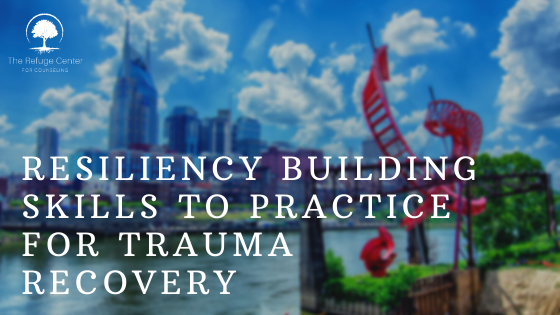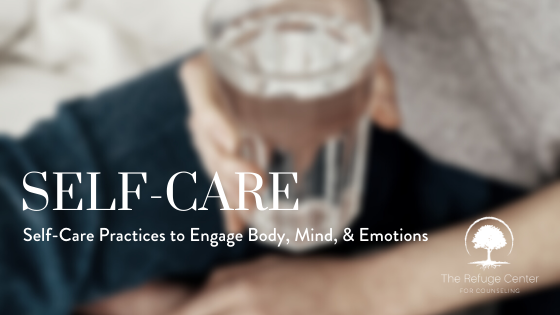- Grounding
Feel your feet on the ground.
Feel gravity.
Feel the pressure of your body on what is supporting it.
Feel the texture of objects with your fingers.
Name details of what you touch, see, hear, smell and taste.
- Tracking / Felt Sense
Place your attention on sensations in the body and monitor them for a period of time.
Describe them and notice when they change.
Stay with yourself even if something very uncomfortable comes up; be like Velcro.
Challenge yourself to stay present and in the moment.
3. Slowing / Titration
Deliberately slow down your emotions and disturbing body sensations, like slowing down the tempo of music.
Separate out and work on only a small bit of the emotions or sensations and leave the rest for later, like taking only one bite of the pie.
- Resourcing
Create an imaginary Safe Place, or recall a safe, calming, comforting experience you had in your life.
Imagine you’re there and notice what you feel.
Know that you can always go to this place in your imagination if you need to calm yourself down.
- Pendulation
Be deeply present with an area of your body feeling activation, such as terror, anger, panic, tension. Then move your attention to a place of neutrality or calm in your body. Very slowly go back and forth. Build your capacity to stay with the negative. Also build your capacity to feel positive things again and to stay with the positive.
- Contact / Self-Holding Exercises
Put your hands on the parts of your body that feel difficult sensations (tension, discomfort). Notice how the hands feel when on the body. Notice how the body feels under the hands. Notice how the space in the body located between the hands feels.
- Community
Socialize and participate in your community. Human connection builds resilience.
- Presence
Practice placing your awareness on any emotion or sensation coming up inside you. Say towards it, “You are welcome here.” Stay with it in a loving, compassionate way.
- Self-Acceptance
Work on reducing “should” thoughts about yourself. Allow yourself the space and time for your body, emotions and mind to embrace and pass through the processes they need to.
- Self-Empathy
Practice being gentle with yourself. Practice self-empathy.
From The Art of Healing Trauma
Illustrated Trauma Healing Exercises, Stories & Research
http://www.new-synapse.com/aps/wordpress/?p=1825
Share this post
Share on facebook
Share on twitter
Share on linkedin
Share on pinterest
Share on print
Share on email
About Us
Who We Serve
Get Involved
-
Connections Lunch
-
Sponsorship Opportunities
-
Volunteer
-
Internship Opportunities
-
Post Master’s Fellowship Program
What’s Happening
Follow Us
Instagram
Facebook
Twitter
Youtube
Pinterest
The Refuge Center for Counseling is a 501c3 nonprofit organization (20-3831943). We are also a United Way of Williamson County Partner Organization.






